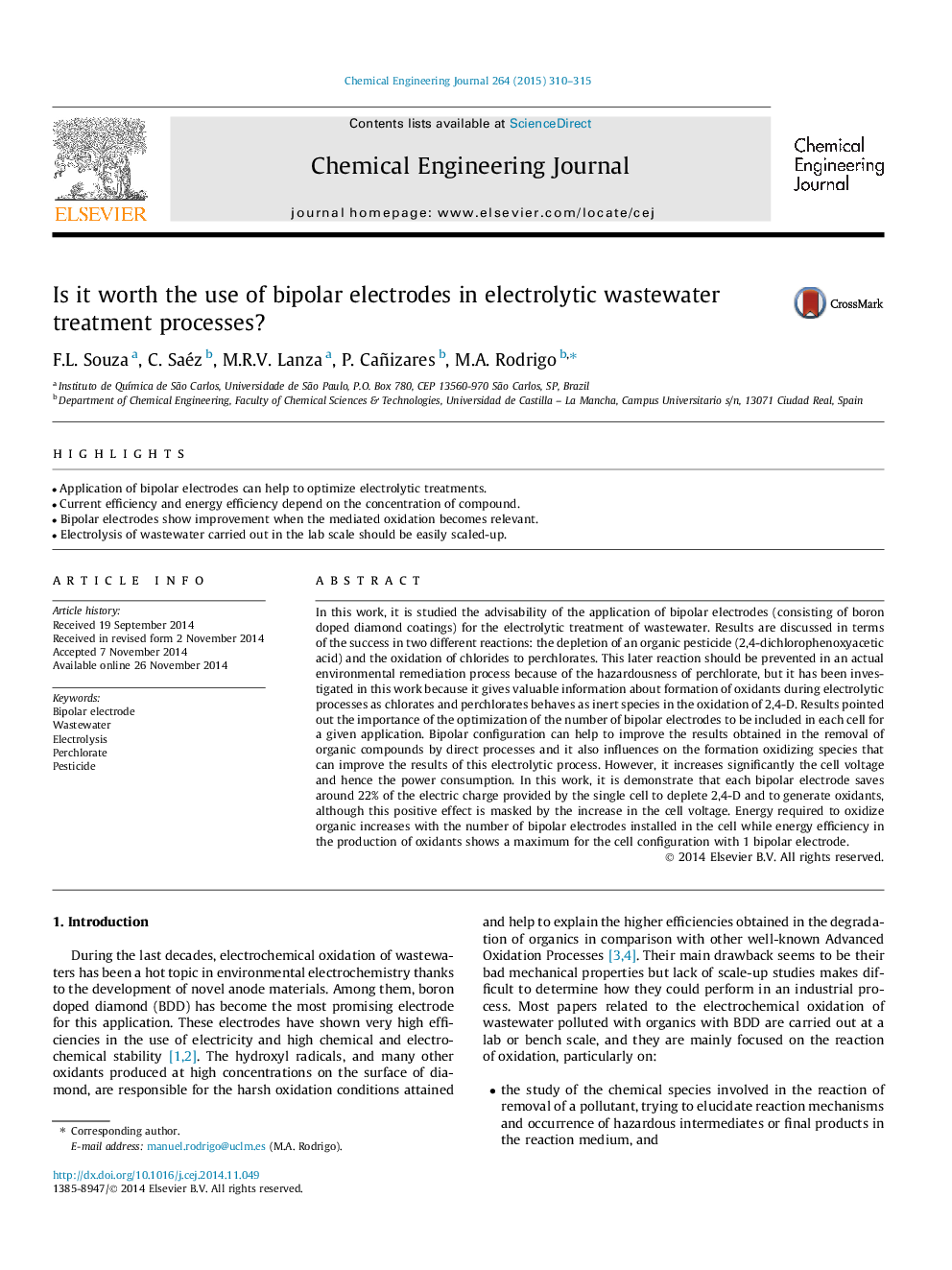| کد مقاله | کد نشریه | سال انتشار | مقاله انگلیسی | نسخه تمام متن |
|---|---|---|---|---|
| 146844 | 456379 | 2015 | 6 صفحه PDF | دانلود رایگان |
• Application of bipolar electrodes can help to optimize electrolytic treatments.
• Current efficiency and energy efficiency depend on the concentration of compound.
• Bipolar electrodes show improvement when the mediated oxidation becomes relevant.
• Electrolysis of wastewater carried out in the lab scale should be easily scaled-up.
In this work, it is studied the advisability of the application of bipolar electrodes (consisting of boron doped diamond coatings) for the electrolytic treatment of wastewater. Results are discussed in terms of the success in two different reactions: the depletion of an organic pesticide (2,4-dichlorophenoxyacetic acid) and the oxidation of chlorides to perchlorates. This later reaction should be prevented in an actual environmental remediation process because of the hazardousness of perchlorate, but it has been investigated in this work because it gives valuable information about formation of oxidants during electrolytic processes as chlorates and perchlorates behaves as inert species in the oxidation of 2,4-D. Results pointed out the importance of the optimization of the number of bipolar electrodes to be included in each cell for a given application. Bipolar configuration can help to improve the results obtained in the removal of organic compounds by direct processes and it also influences on the formation oxidizing species that can improve the results of this electrolytic process. However, it increases significantly the cell voltage and hence the power consumption. In this work, it is demonstrate that each bipolar electrode saves around 22% of the electric charge provided by the single cell to deplete 2,4-D and to generate oxidants, although this positive effect is masked by the increase in the cell voltage. Energy required to oxidize organic increases with the number of bipolar electrodes installed in the cell while energy efficiency in the production of oxidants shows a maximum for the cell configuration with 1 bipolar electrode.
Journal: Chemical Engineering Journal - Volume 264, 15 March 2015, Pages 310–315
